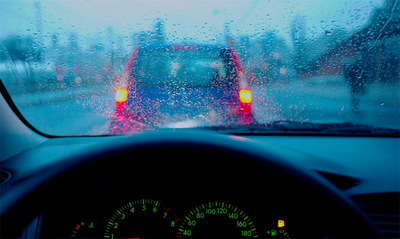Drive into Spring with Wet Weather Wisdom!
 |
Drive into spring with wet weather wisdom!
Spring showers may bring May flowers, but rain is a common cause of crashes and can create chaos on the road for drivers.
Bloomington, IL -- April 21, 2015: Spring storm season has arrived which means it’s important all drivers understand that any amount of rain can cause hazardous road conditions. According to the U.S. Department of Transportation/Federal Highway Administration, 74% of weather-related crashes happen on wet pavement. Contrary to what most may think, only 17% of weather related crashes occur during snow or sleet. Take time today to gain some simple wet weather wisdom that can help all drivers reduce the risk of car crashes.
Get wet road savvy this spring by:
Making sure windshield wiper blades and headlights are working well. Replace blades at least once a year for best results. It’s the law in all states to turn headlights on when visibility is low, and many states also require having the headlights on when the windshield wipers are in use. Checking that rear and brake lights are functioning properly. They help your vehicle be seen in rainy weather. Switching from winter to summer tires, if needed. Don’t forget to check tread wear and tire inflation. Both can help with traction. Reducing your speed on wet surfaces and allowing a safe following distance.. Rain, oil and dust equal slippery conditions and traction problems on roads. Turning off cruise control. When roads are wet it is best to allow the driver to control speed and react to conditions. Paying attention to flood warnings and barricades. They’re typically placed in areas where flooding occurs often and can be potentially dangerous.
2 Avoiding driving through standing water, putting yourself, passengers and your vehicle at risk. You can lose control in as little as six inches of water; deeper, moving water can cause stalling or carry vehicles away. The Centers for Disease Control report that over half of all flood-related drownings occur when a vehicle is driven into hazardous flood water. Hydroplaning, the skidding or sliding of tires on wet surfaces, can happen anytime roads are wet. If your vehicle hydroplanes: Don’t panic. Avoid hard braking and quick turns. Ease off the gas, gently apply the brakes (lightly pump standard brakes, apply consistent pressure if you have ABS). Steer straight ahead or to a safe open area. Vehicle braking and traction control systems vary. Check your vehicle owner’s manual to know your vehicle systems and recommended action. If you’re teaching a new driver, be sure to practice driving in an array of weather conditions, including rain, and cover these tips with them. Warmer weather means children, pets and bicycles will be out and about. Take extra caution, especially in residential areas. Teach new teen drivers to scan for these potential hazards.


